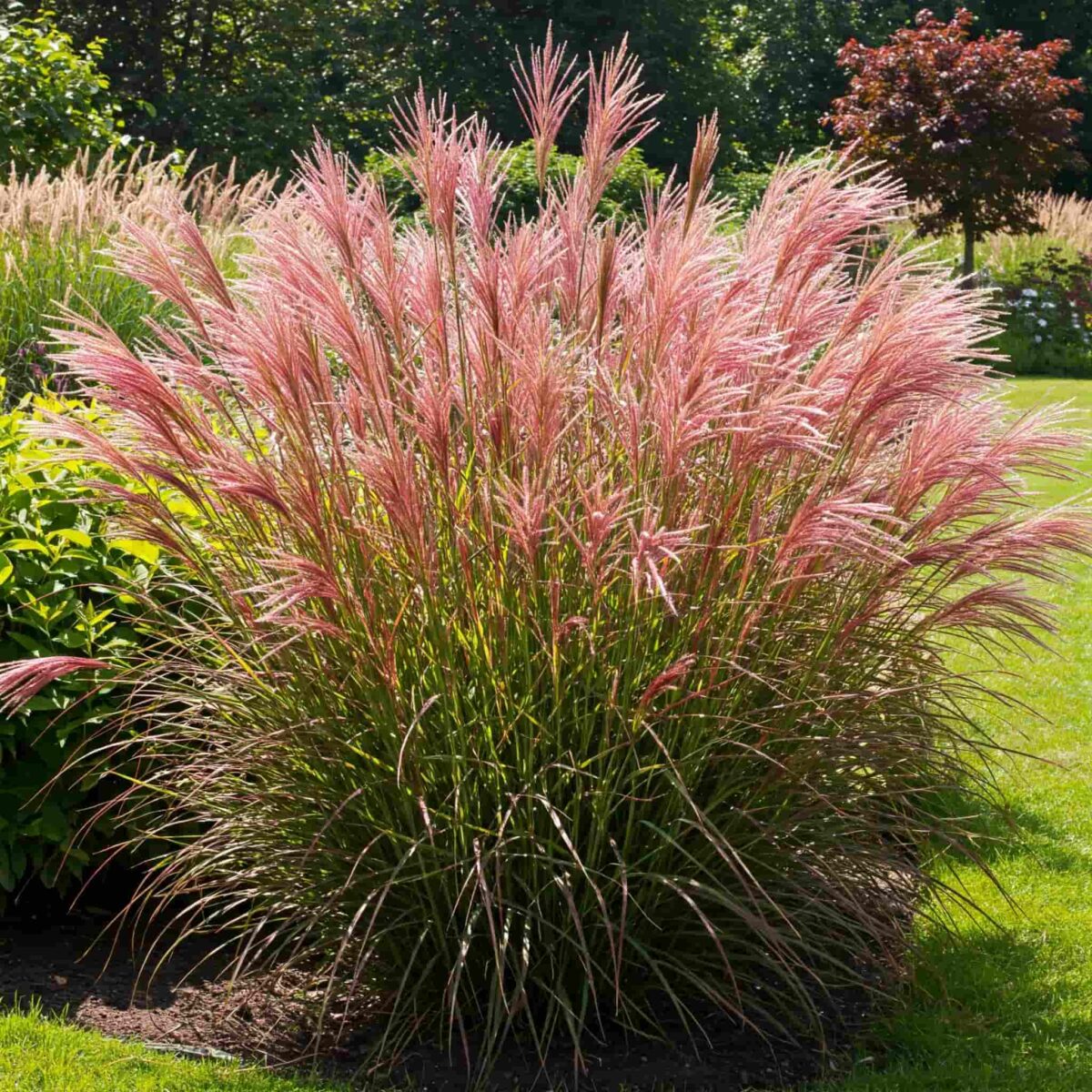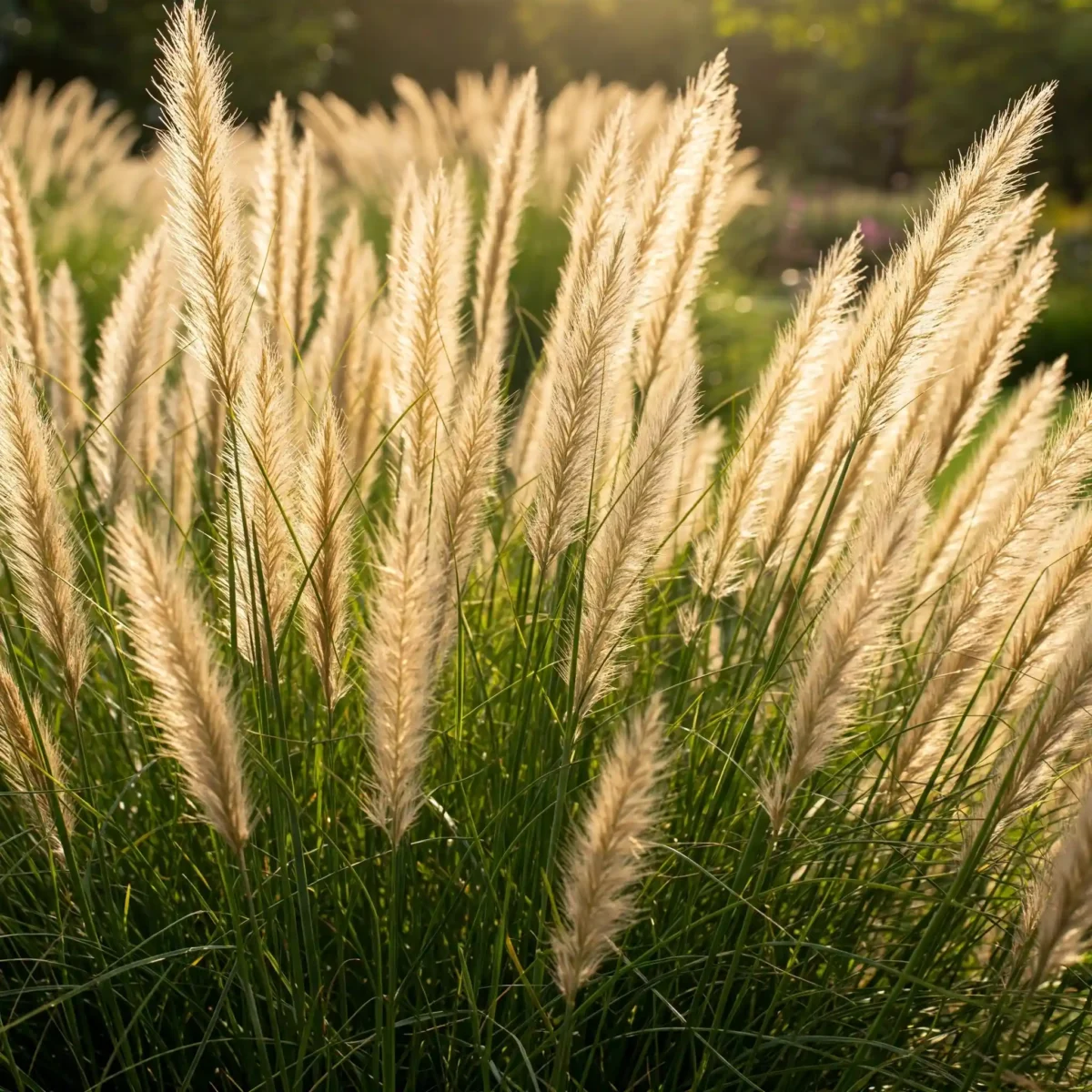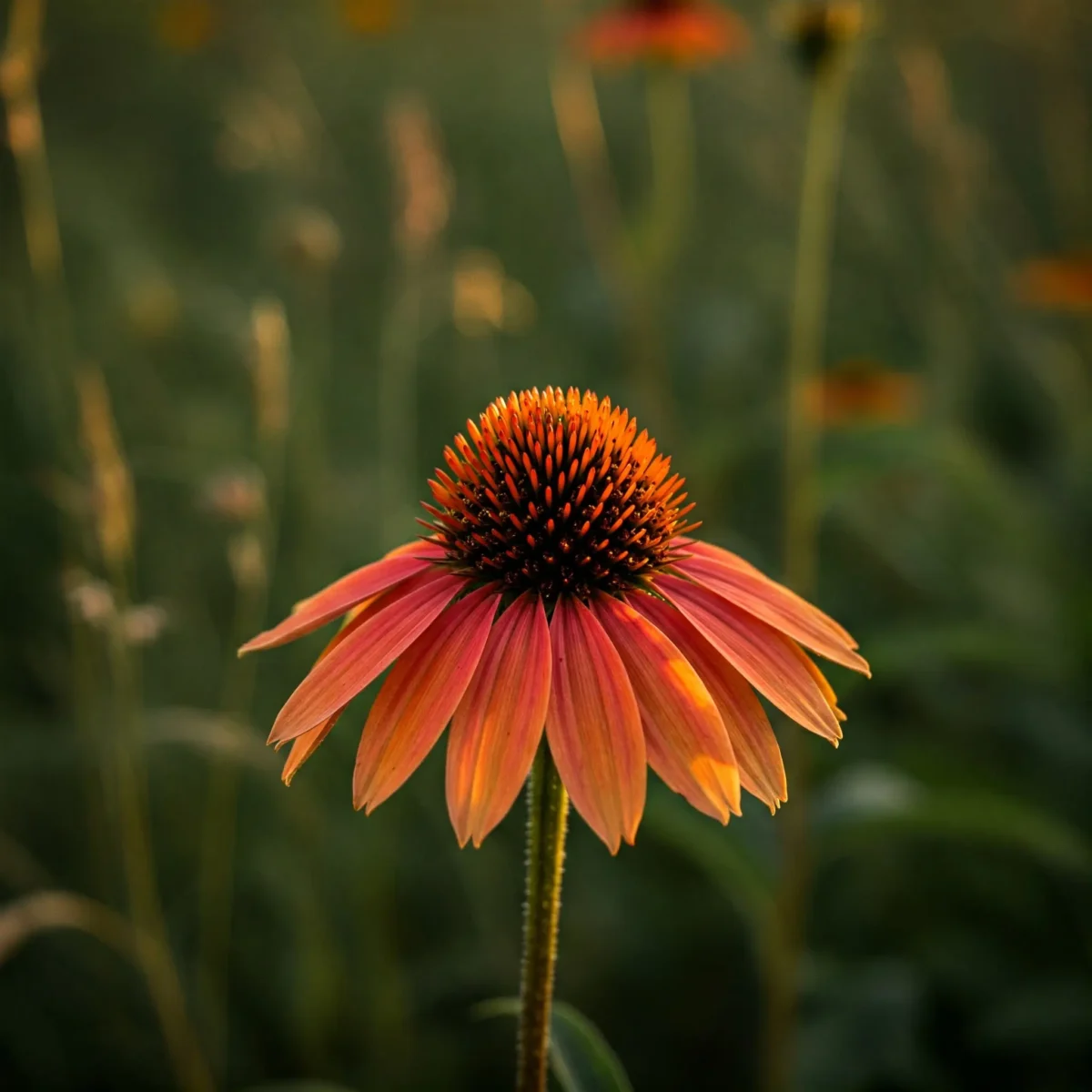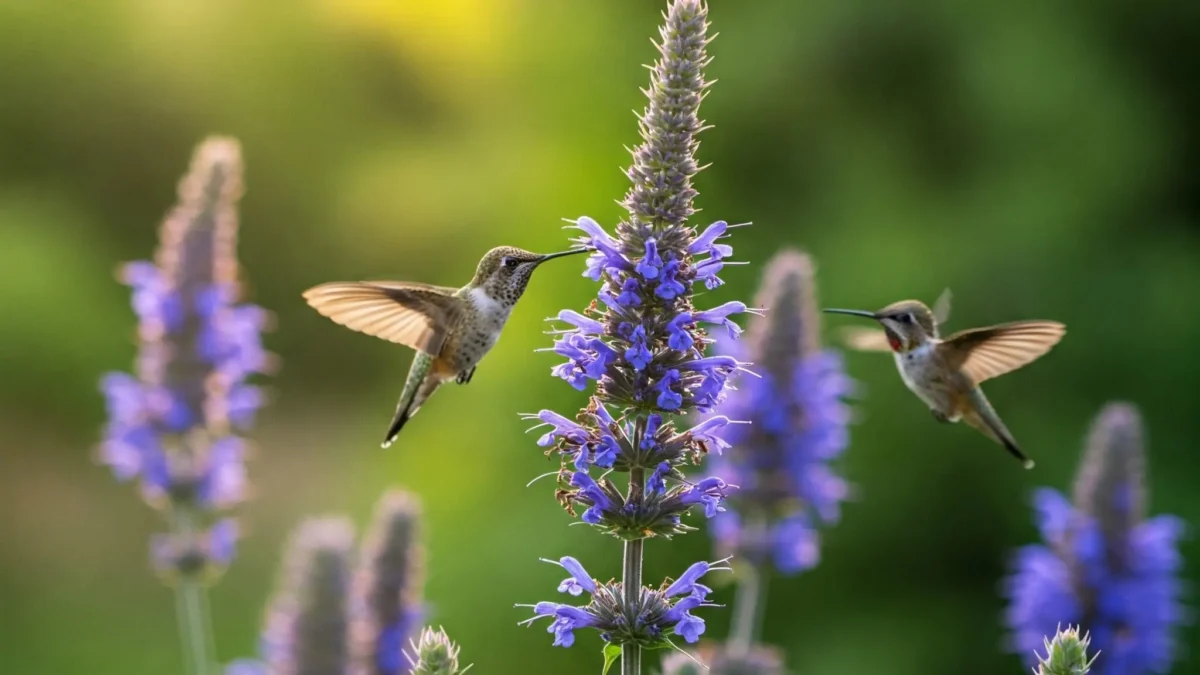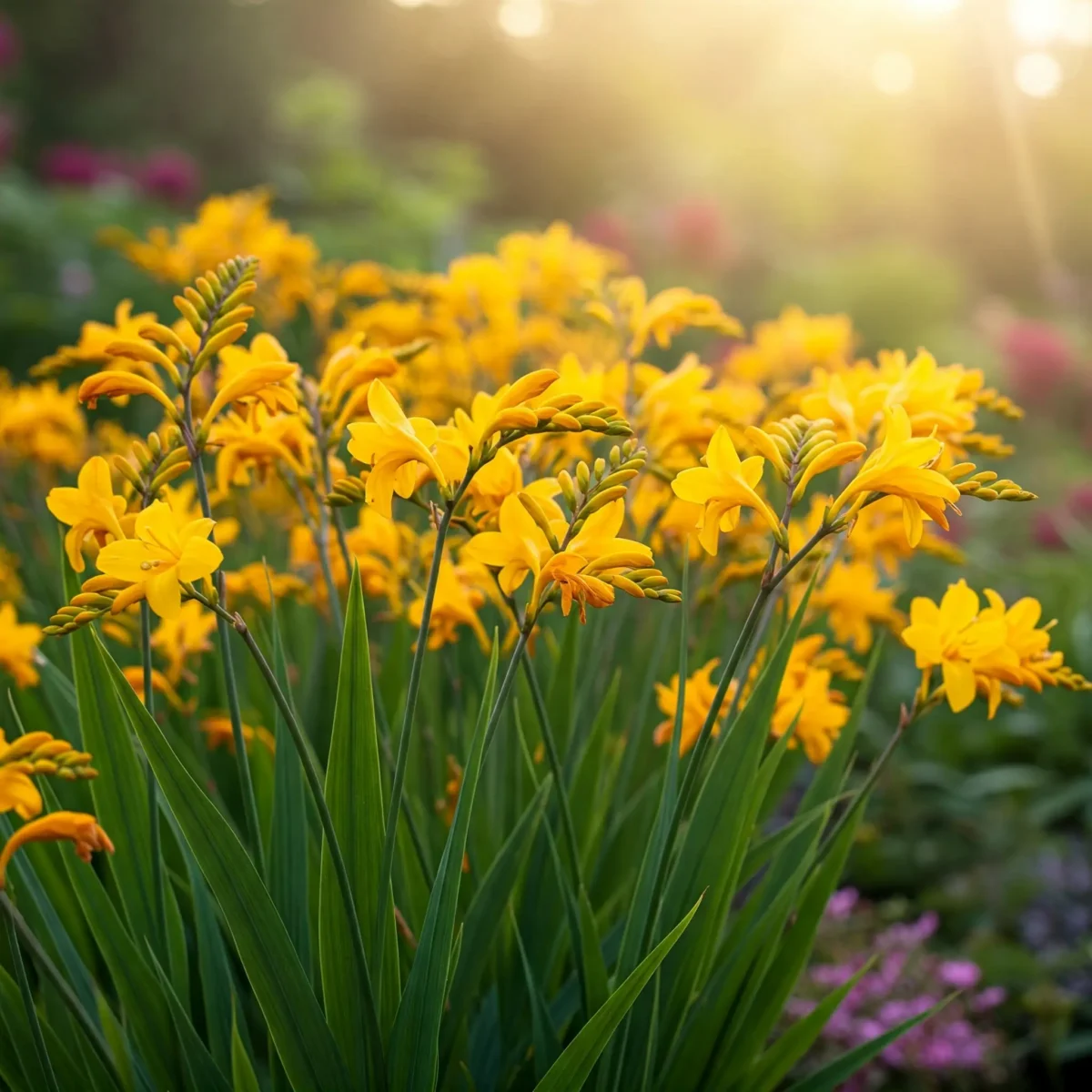Crocosmia ‘John Boots’
Often known as Montbretia ‘John Boots,’ Crocosmia ‘John Boots’ is a fascinating perennial with elegant, arching foliage and vivid, warm-toned flowers. Gardeners trying to add a little flaming elegance to their landscapes love this cultivar because of its rather small scale and rich, golden-bronze blossoms. This flowering plant has quite low maintenance. From its fundamental care and propagation methods to creative design ideas and practical solutions for common issues, this guide offers thorough knowledge on every facet of “John Boots’ Montbretia”.
Montbretia ‘John Boots’ Overview
Botanical Description & Taxonomy
Crocosmia ‘John Boots’ is a cormous perennial in the Iridaceae family—that of the Iris. Presumably produced from Crocosmia x crocosmiiflora, a cross between Crocosmia aurea and Crocosmia pottsii, this hybrid cultivar is. Originally from South Africa, Crocosmia species are well-known for their brilliantly coloured, tubular blooms and sword-like foliage. Shorter height and unique bronze-gold blossoms define “John Boots”.
Table with Comprehensive Plant Information
| Feature | Description |
| Common Name | Montbretia ‘John Boots’, Crocosmia ‘John Boots’ |
| Scientific Name | Crocosmia ‘John Boots’ |
| Plant Type | Cormous Perennial |
| Mature Size | 2-3 feet tall, 1-2 feet wide |
| Growth Rate | Moderate |
| Sun Exposure | Full sun to partial shade (best flowering in full sun) |
| Soil Type | Well-drained, moderately fertile soil |
| Soil pH | Slightly acidic to neutral (pH 6.0-7.0) |
| Hardiness Zones | USDA Zones 6-9 |
| Flower Color | Golden-bronze |
| Bloom Time | Mid to late summer (July-September) |
| Foliage Color | Green, sword-shaped |
| Special Features | Attracts hummingbirds and butterflies, deer resistant, relatively drought-tolerant once established |
| Toxicity | Considered non-toxic to humans and pets, but ingestion may cause mild gastrointestinal upset. (Source: ASPCA – While not explicitly listed, Crocosmia is generally considered non-toxic) Note: Always double-check with authoritative sources for pet safety. |
Ideal Applications
Ideal Applications: Crocosmia “John Boots” enjoys mixed perennial gardens, cottage gardens, and sunny garden edges. Its quite small scale also fits container gardening. It’s a great option to provide the landscape vertical interest and warm color.
Ideal Growing Conditions for Crocosmia “John Boots”
Sunlight
Plant ‘John Boots’ Montbretia in full sun, requiring at least six hours of direct sunshine daily, for optimal flowering and vivid color. It can withstand some shade (four to six hours of sunlight), however flowering might be limited.
Soil
This plant so favors rather fertile, well-drained soil. To increase drainage, alter heavy clay soils with compost or another organic material. Perfect pH for soil is slightly acidic to neutral—6.0–7.0.
Watering
Water often, particularly in the first growing season, to build a deep, broad root system. Once established, “John Boots” is rather drought-tolerant. Water deeply but less often so that the soil dries somewhat between waterings. Steer clear of overwatering if you want corm rot free.
Temperature and Humidity
Crocosmia “John Boots” does well in moderate humidity and warm temperatures. In USDA zones 6–9 it is hardy. In colder climates (Zone 5), think about including protection with winter mulch.
Fertilizing
Fertilize “John Boots’ Montbretia in early spring, as fresh growth starts. Either use a liquid fertilizer diluted to half strength or a balanced, slow-release granular fertilizer. Steer clear of overfertilizing, which can cause too much leaf growth at the price of blooms.
Crocosmia ‘John Boots’ Propagation Techniques
While growing Crocosmia from seed is less frequent for cultivars like ‘John Boots,’ as the offspring may not be true to type. If you want to attempt, plant seeds spring following the last frost.
Cutting propagation is not a practical way for crocosmia.
Division (Most Common and Reliable Method)
- Timing: Divide “John Boots’ Montbretia early spring or fall following flowering’s end.
- Digging: Carefully remove the whole corm cluster.
- Separately gently separate the corms such that every division has multiple healthy corms and roots.
- Replant the divisions 12 to 18 inches apart, exactly at the depth they were growing from before.
Not a usual way of proliferation for Crocosmia is layering.
Not relevant to Crocosmia is air layering.
Design concepts and accompanying plants
“John Boots’ Montbretia gives mixed perennial borders, cottage gardens, and cutting gardens a vivid burst of colour and vertical appeal. Its warm tones go wonderfully with other late-summer bloomers.
John Boots’ small scale makes them a great fit for container gardening. Plan with a well-draining potting mix and a pot with drainage holes.
Accompanying Plants
- Salvia, Echinacea (Coneflower), Verbena bonariensis
- Yellow and Orange-flowering plants Rudbeckia (Black-Eyed Susan), Helenium (Sneezeweed), Hemerocallis (Daylily)
- Panicum virgatum (switchgrass), Miscanthus sinensis (maiden grass) for ornamental grasses
Typical Issues and Remedies
Identity and Control of Pests
- Little bugs called spider mites can stipple and yellow leaves. Manage using horticultural oil or insecticidal soap. (University of California IPM – Spider Mites) (Source)
- Thrips can produce deformed leaf development and silvering. Use insecticidal soap or neem oil to have control.
Treatment and Prevention of Diseases
- Caused by either poorly drained soil or overwatering, corm rot Verify excellent drainage and steer clear of overwatering.
- Rust: An orange or brown pustule-causing fungus that attacks foliage Eliminate sick leaves and increase air flow.
Typical Growing Problems
- Underwatering, overwatering, nutritional deficits, or pests can all lead to yellowing leaves. Find the fundamental reason and treat it properly.
- Nutrient shortages, little sunlight, or poor soil can all lead to stunted development.
- Lack of blossoms might result from late frost, inadequate sunlight, or crowding.
When To Purchase Crocosmia “John Boots”?
The ideal season for purchase of Crocosmia ‘John Boots’ is spring or fall.
Container plants vs. bare root
- Bare root is Purchasing bare-root corms in the fall helps them to establish roots before winter, therefore promoting earlier and more strong spring growth.
- Purchased and planted over the spring to fall growing season, container-grown plants provide additional flexibility.
- Shopping for seeds Timing: If growing from seed, buy winter seeds to begin inside a few weeks before the final frost.
- Consider the climate of the region; spring planting of container-grown plants is usually advised in colder areas (Zone 6). Fall planting bare-root corms is best in warmer climates. Crocosmia “John Boots” is hardy in Zones 6–9.
- Gardening Goals: Buy flowering container-grown plants if you want instant impact. Buy bare-root corms in the fall if you want the best value and are looking ahead.
In essence
Any garden would benefit from the quite low-maintenance and rewarding perennial Crocosmia ‘John Boots’ to provide a little of flaming elegance. Following the care advice in this book will help you to guarantee that your Montbretia survives and offers years of vivid flowers. Its versatility, deer resistance, and appeal to pollinators make it a great addition to many kinds of garden environments. For your garden, is “John Boots” a good fit? Indeed, particularly if you want a warm-toned, low-maintenance perennial that draws helpful wildlife and offers vertical appeal.



